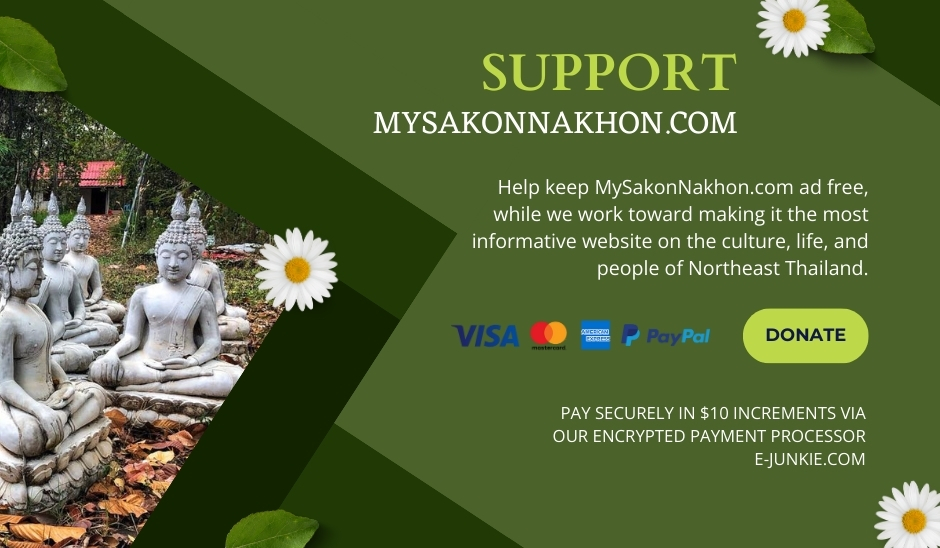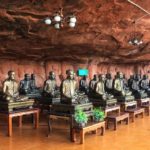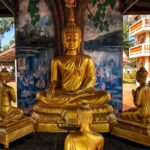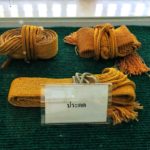
Heet Sip Song: Isaan Thailand Merit Making Traditions
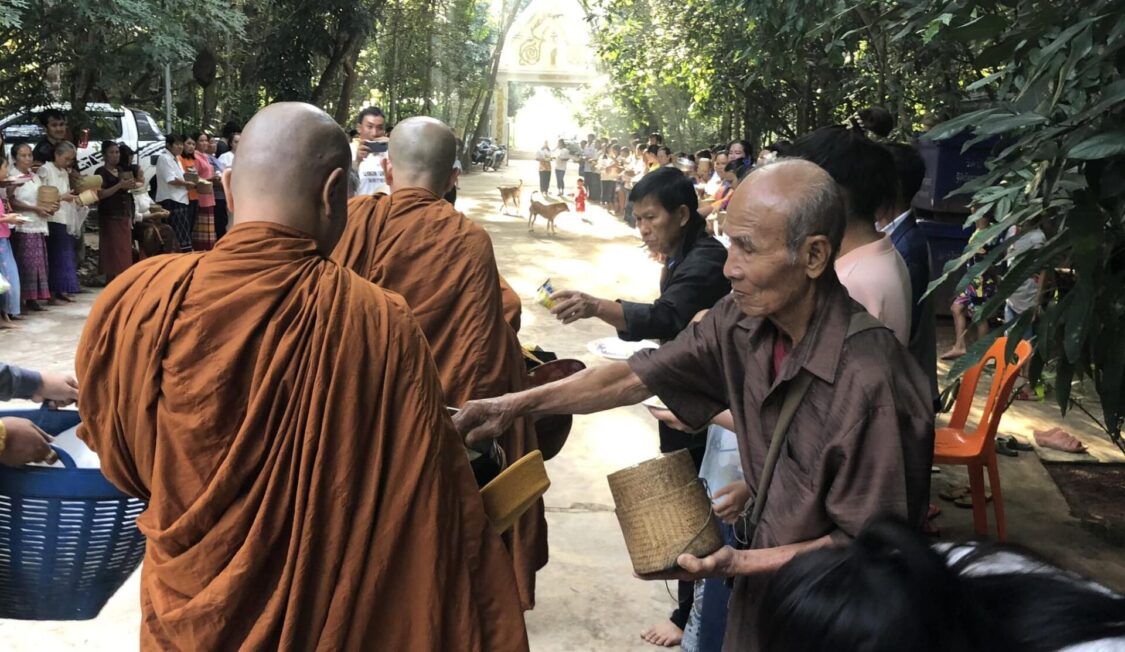
Heet Sip Song (ฮีตสิบสอง) are monthly merit-making events in the Isaan region of Northeast Thailand. The word “heet” in Isaan means “a time-honored tradition” — being related to the Thai word “jareet” (จารีต), which has the same meaning. Sip Song meanwhile means “twelve,” referring to each of the monthly merit making events throughout the year.
The Heet Sip Song calendar follows the Thai lunar months. It ordinarily corresponds with a start date in December and an ending date in November. Historically, these “heet” have provided the many Isaan tribes an opportunity to gather together in a harmonious way — creating in a sense a cultural melting pot strengthened by tradition.
The phrase for making merit in Thailand is “tam boon” (ทำบุญ). Thus the name of each month’s merit-making event begins with the word “boon,” meaning “merit”. The events represent a combination of Buddhist principles and traditional Isaan beliefs, such as the honoring of ancestors and ghost spirits.
Specific activities vary, depending on the village, province, and temple — with some areas not conducting any special events of note. But the celebrations that are held all share similarities with regards to the Isaan people’s faith, spiritual beliefs, and sense of community.
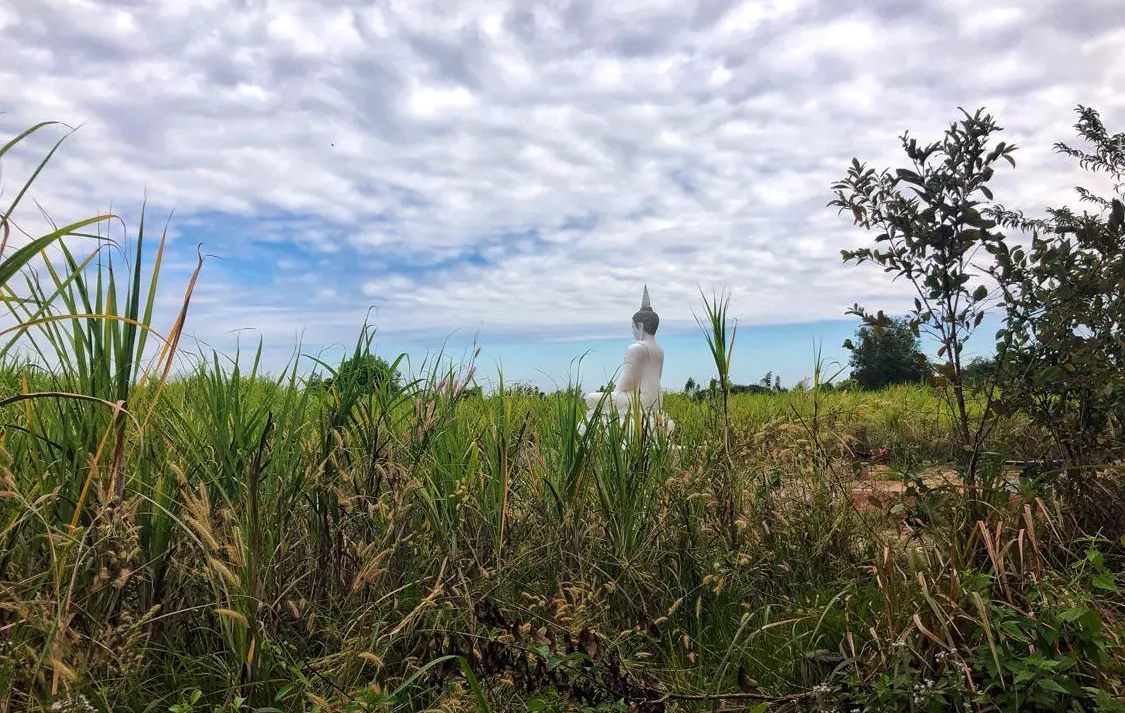
Merit Tradition # 1. First Lunar Month (December)
Boon Khao Kam (เบุญเข้ากรรม)
The first Isaan “heet” (or merit-making event) is Boon Khao Kam, which means “merit enters karma”. It is the month when monks enter a penance period called Pariwaskam (ปริวาสกรรม) to cleanse themselves of their impurities — that is their violations of the Buddhist precepts, which were made either intentionally or unintentionally during the Buddhist Lent period known as Phansa (พรรษา). Villagers will prepare food to offer to monks who are undergoing karmic cleansing. These offerings also are believed to grant strong karmic benefits to the giver. The cleansing period lasts 9 nights, but the start date varies per province.
Merit Tradition # 2. Second Lunar Month (January)
Boon Khun Lan (บุญคูนลาน)
Boon Khun Lan is a merit-making event that celebrates abundance and auspiciousness, including thanking and apologizing to Mae Phosop (แม่โพสพ), the Thai Rice Goddess, for trampling on her while harvesting the rice fields.
After finishing threshing the rice, Isaan villagers will sometimes pile up grain on the threshing floor in an inverted cone called “Kum Khao” (กุ้มข้าว) before storing the rice in a shed or barn. They will make merit with rice, and invite monks to chant Buddhist mantras over their harvest while sprinkling holy water over the piles. In some cases, monks will also sprinkle holy water over the fields, offering blessings so that the rice seedlings will grow beautifully and the farmer has good results.
After that, the rice is transported to the granary. Some rice owners also may perform a Su Kwan Lao ceremony (พิธีสู่ขวัญเล้า). This includes the making of a ceremonial tree fashioned from banana leaves and flowers, traditional dancing, trays of savory food, and the wrist tying of holy threads known as “sai sin” (สายสิญจน์).
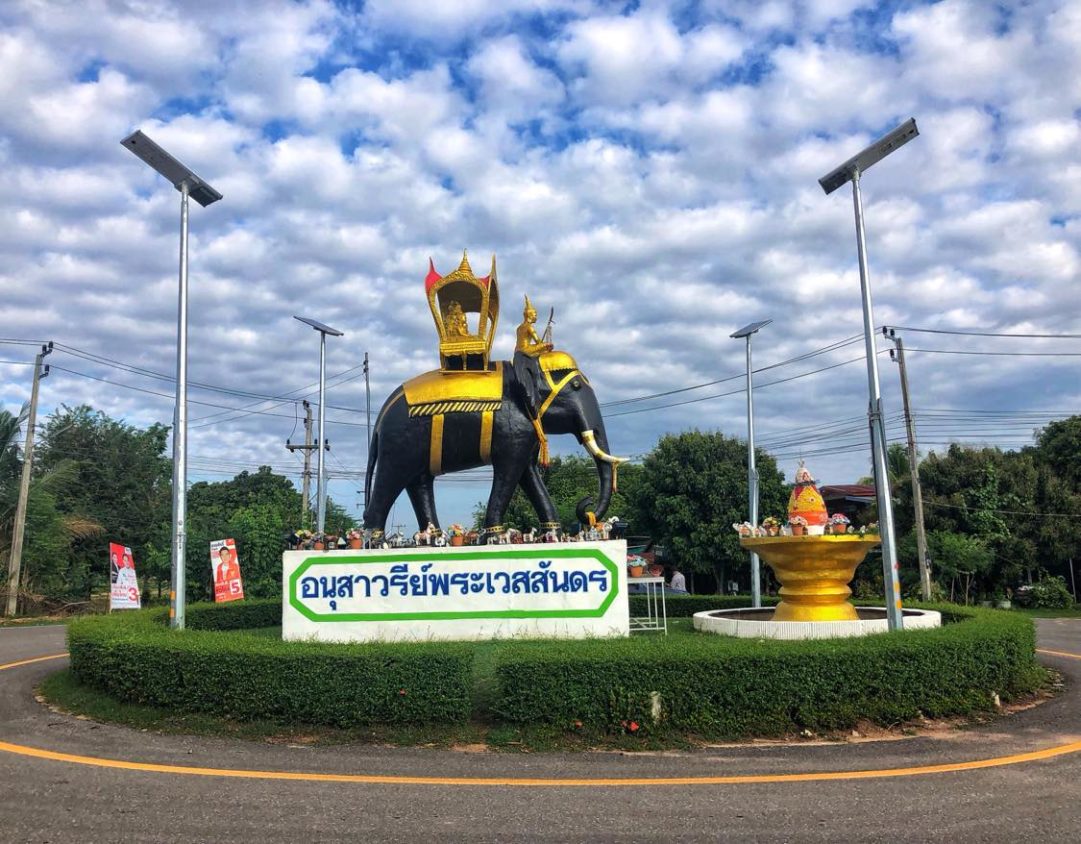
Merit Tradition # 3. Third Lunar Month (February)
Boon Khao Jee (บุญข้าวจี่)
The 3rd lunar month’s festival, Bun Khao Jee, falls on Makha Bucha Day (วันมาฆบูชา), which marks the day that over a thousand of the Buddha’s disciples spontaneously gathered together to hear him preach. Isaan villagers in Sakon Nakhon take steamed sticky rice and shape it into balls (ข้าวจี่) about the size of a large duck egg — sometimes mixing sugar cane juice in with the rice. They’ll place these balls on skewers, apply salt, brush it with egg yolk (optional), and turn them over and over until the surface of the fried rice turns yellow. These “khao jee” (ข้าวจี่) are then presented to monks at the temple in the morning. Merit making for Makha Bucha Day is also conducted at the same time.
Merit Tradition # 4. Fourth Month (March)
Boon Phawet (บุญผะเหวด) or Bun Phra Wet (บุญพระเวสส์)
The “Heet Sip Song” event called Boon Phawet is celebrated in all Thai provinces. This tradition is related to the Jataka tale of Phra Maha (Prince) Vessantara, which deals with the 10 virtues that the Lord Buddha demonstrated in his last incarnation before becoming the Buddha. The name Boon Phawet or Bun Phra Wet is an abbreviated version of the name Vessantara — as the abbreviated “Vess” is pronounced “Wet” (เวสส์) in Thai.
The event coincides with the Mahachat Sermon Festival (งานเทศน์มหาชาติ), which celebrates the Vessantara Jataka Sermon. It’s held for 3 days. The first day is the preparation day for the event, called “Meu Hom” (มื้อโฮม), which in the Issan language means “the day” (มื้อ) when we “gather together” (โฮม). Some temples will decorate the inside of Viharn (or congregation hall) to look like a forest. At night, a sermon will be told about Phra Malai Saen (พระมาลัยแสน), the supernatural monk who visited hell.
The second day is called “Meu Nan” (มื้อนั้น), which means “that day” in the Isaan language. It celebrates the procession of Phra Vessantara (พระเวสสันดร) back into the city of his birth after his banishment. There will be dancing and hundreds or thousands of cymbals played at some celebrations. All thirteen sections of Mahachat sermon also will be delivered on this day.
The third day is a merit-making ceremony where a thousand lumps of rice are offered to monks. This offering pays homage to the original 1,000 Pali verses that make up the story of Phra Vessantara. Some Isaan areas also hold a parade of a thousand bales of rice, lead by villagers dressed in white robes.
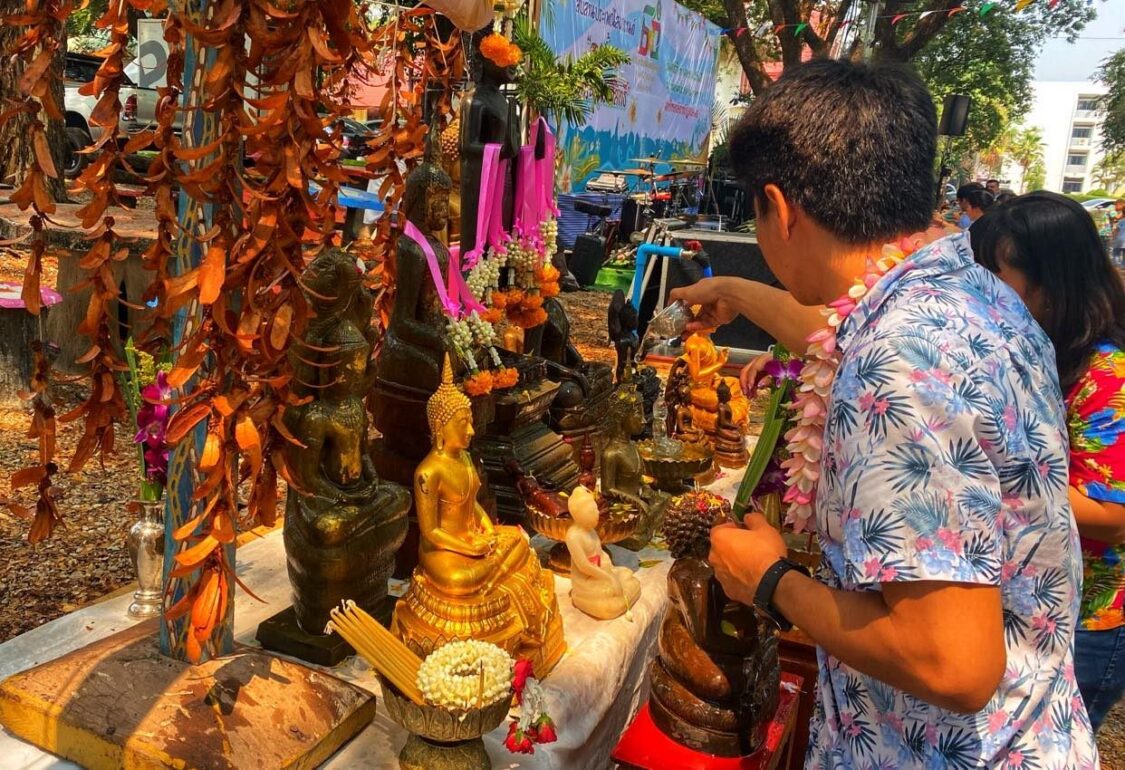
Merit Tradition # 5. Fifth Lunar Month (April)
Songkran (บุญสงกรานต์)
The 5th Isaan merit-making event occurs during Songkran, the Thai New Year. There is bathing of Buddha images; and the blessing of family members, elders, and friends by the pouring water over the hands. The faithful go to the temple to listen to Dharma, while the young will splash water together. In some places, sand pagodas will be made and a procession of a thousand bales of rice will be held.
Merit Tradition # 6. Sixth Lunar Month (May)
Boon Bang Fai (บุญบั้งไฟ)
The Isaan “heet” known as Boon Bang Fai originates from the belief in Phraya Than (พระยาแถน) or Phi Fa (ผีฟ้า), who is believed to be either a powerful angel or a representation of Indra, the Hindu god of rain and storms. In the sixth Thai lunar month, rockets are fired in Northeast Thailand to honor Phraya Than and bring rain to the fields for an abundant crop. Rocket parades, and rocket competitions and contests are held — one notable example being in the Ban Don Tan (บ้านดอนตาล) village of the Phang Khon District of Sakon Nakhon.
On the last day of the rocket launches, novice Naga monks are often ordained.
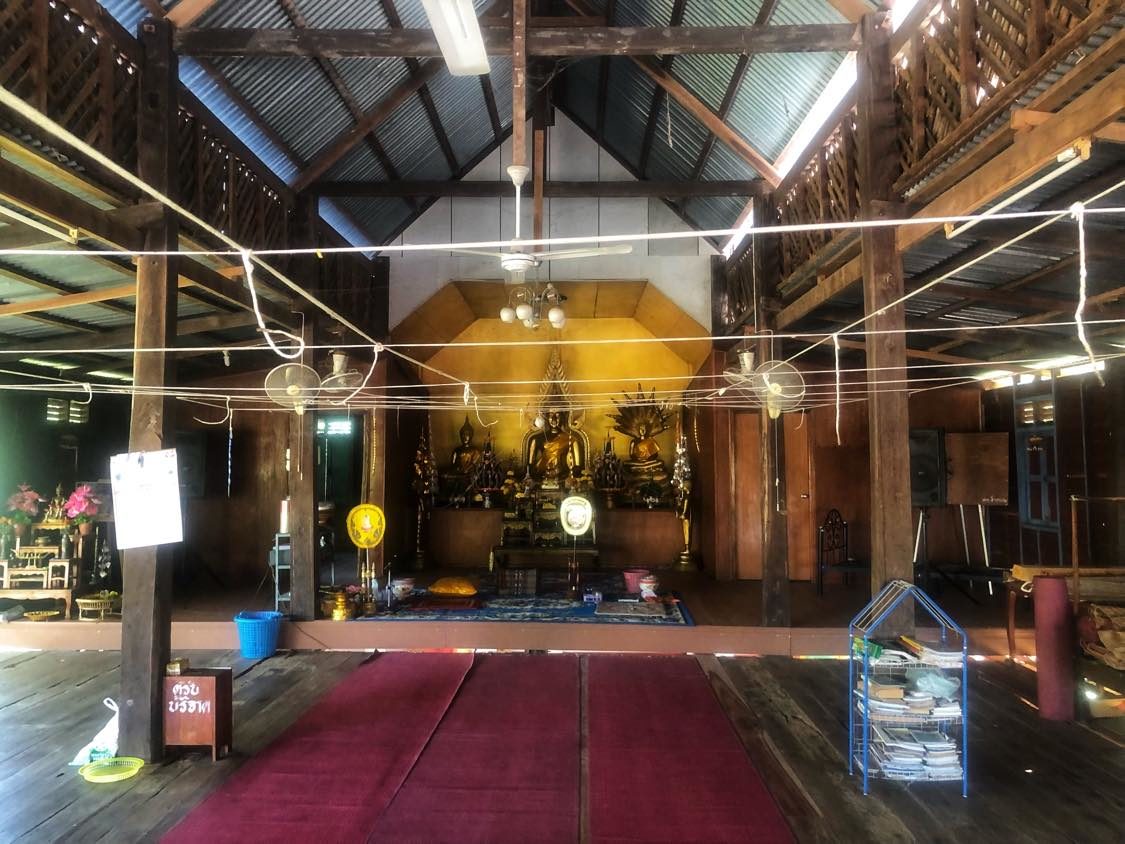
Merit Tradition # 7. Seventh Lunar Month (June)
Boon Samha (บุญซำฮะ) or Bun Chamra (บุญชําระ)
The “Heet Sip Song” event called “Boon Samha” is aimed at purifying the mind in preparation for the Buddhist Lent period. It’s also conducted to dispel malevolent spirits and bad luck from the village. The faithful will go to the temple to make merit, offer food to monks, and listen to sermons. Some also will pay homage to ancestors, not only in their own family but to those who helped to establish their village, city, province, or tribe.
For those interested in learning to speak the Isaan language, note that Boon Sam Ha is the Isaan pronunciation of the Thai phrase Boon Chamra (บุญชําระ), which means “merit cleansing”. In the Isaan language there is no beginning “ch” or “r” sound, like there is in the Thai language, so these initial sounds often will be replaced by a “s” or “h” sound, respectively.
During Boon Samha, some Isaan villages will perform ceremonial dances where banana trees are tied to 4 corner dance poles creating a sacred space for the dance. Blessings with holy water and strings (sai sin) tied to wrists also will occur.
Merit Tradition # 8. Eighth Lunar Month (July)
Boon Khao Phansa (บุญเข้าพรรษา)
Boon Khao Phansa is a merit-making event that occurs everywhere in Thailand. It occurs during the eighth lunar month and celebrates entrance into the Buddhist Lent period: Khao Phansa (เข้าพรรษา). At this time, monks and novices are required stay at one temple for three months during the rainy season. During Lent, Buddhists in Thailand also are expected to make an extra effort to keep the 5 Buddhist precepts, such as abstaining from alcohol (which many Isaan men will do).
Boon Khao Phansa is held on the 15th day of the waxing moon of the 8th month, which is called Asahna Bucha Day (วันอาสาฬหบูชา), which marks the day when the Buddha gave his first sermon on the Dharma. Villagers will go to the temple to offer breakfast to the monks, and sometimes lunch (before 12 pm). However, many Isaan monks follow the Thailand Forest Tradition of eating only once a day in the early morning.
Villagers also will give Thai monks items needed items to make it through the Buddhist Lent period, such as robes, medicine, candles, lamps, oil, and various appliances. In addition, at some temples, candles will be melted down and molded into a large candle tree, decorated with beautiful patterns.
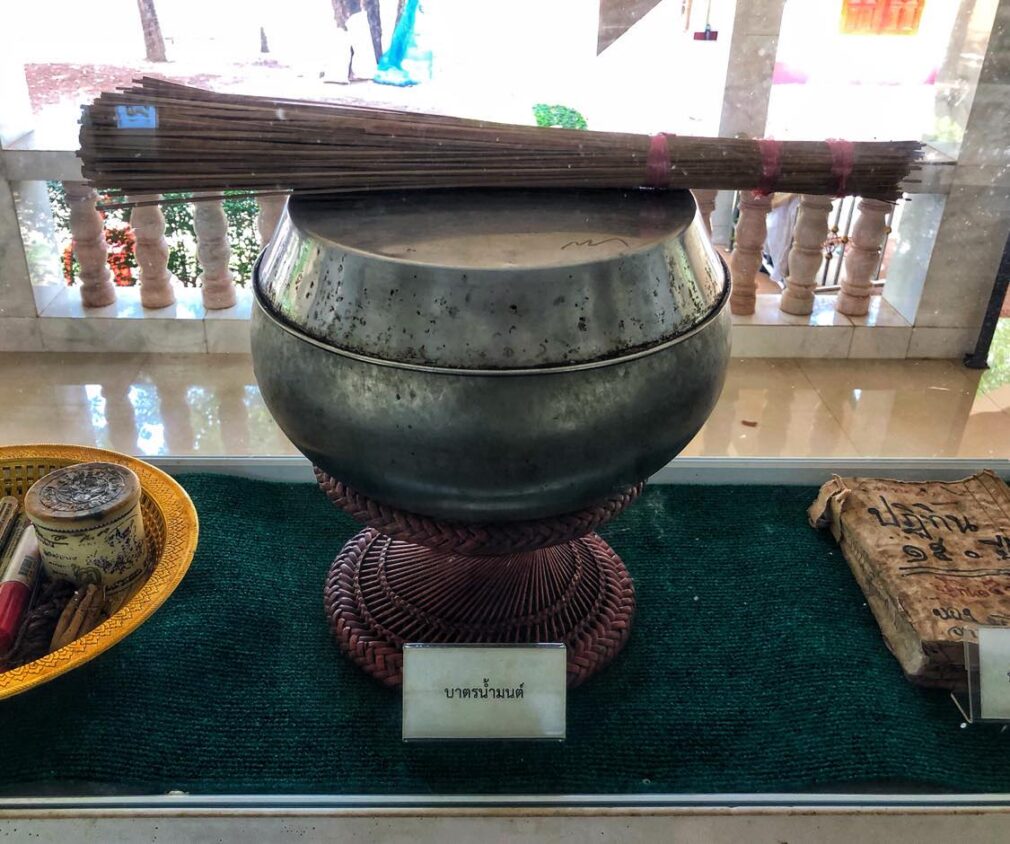
Merit Tradition # 9. Ninth Lunar Month (August)
Boon Khao Pradap Din (บุญข้าวประดับดิน)
Boon Khao Pradap Din is a “heet” that combines Buddhism with Isaan’s traditional belief in spirits. Legend has it that once a year, on the waning moon day of the 14th day of the 9th lunar month, the ruler of the underworld Phra Yom (พระยม) releases “yoma ban” (ยมบาล) or hell’s ghosts to prowl the earth. In the evening, food is placed on the ground to prevent these ghosts from harming children or making them sick.
In the morning, food is given to monks at the temple, and offerings (such a sweet and savory foods, betel nuts, and cigarettes) are made to deceased relatives. Isaan folk place such items in flowered baskets or krathongs (กระทง) made of banana leaves, and position them in various places around the temple before dawn, because ancestral spirits only travel on earth at night.
Merit Tradition # 10. Tenth Lunar Month (September)
Boon Khao Sak (บุญข้าวสาก)
Boon Khao Sak falls on Wan Sat Thai (วันสารทไทย), which is a day to offer thanks to ancestors and to the rice fields that are still growing and not yet harvested. An important food connected with this Buddhist event is “krayasat” (กระยาสารท), which made from a mix of ingredients that includes sticky rice, peanuts, sugar, coconut, and sesame seeds, forming a rich, sweet, and crunchy texture. This sweet snack is made as an offering to relatives who have passed on to the other side, as well as to monks at the temple.
One unique ceremony that occurs during Boon Khao Sak is where monks receive their offerings by the drawing of lots (aka a lottery system). The monks may select a piece of paper from a tray which has written on it the name of someone who has provided an offering of food. Or sometimes the names of the monks are written on the slips of paper and worshipers draw a slip to see which monk they will offer their food.
In the Northern region of Thailand (such as Chiang Mai and Chiang Rai) this ceremony is called “Tan Kuay Salak” (ตานก๋วยสลาก). Tan, like the Thai word “than” (ทาน), means to eat, while “kuay” is a bamboo basket filled with food that you offer as alms, and “salak” means a drawing or lottery.
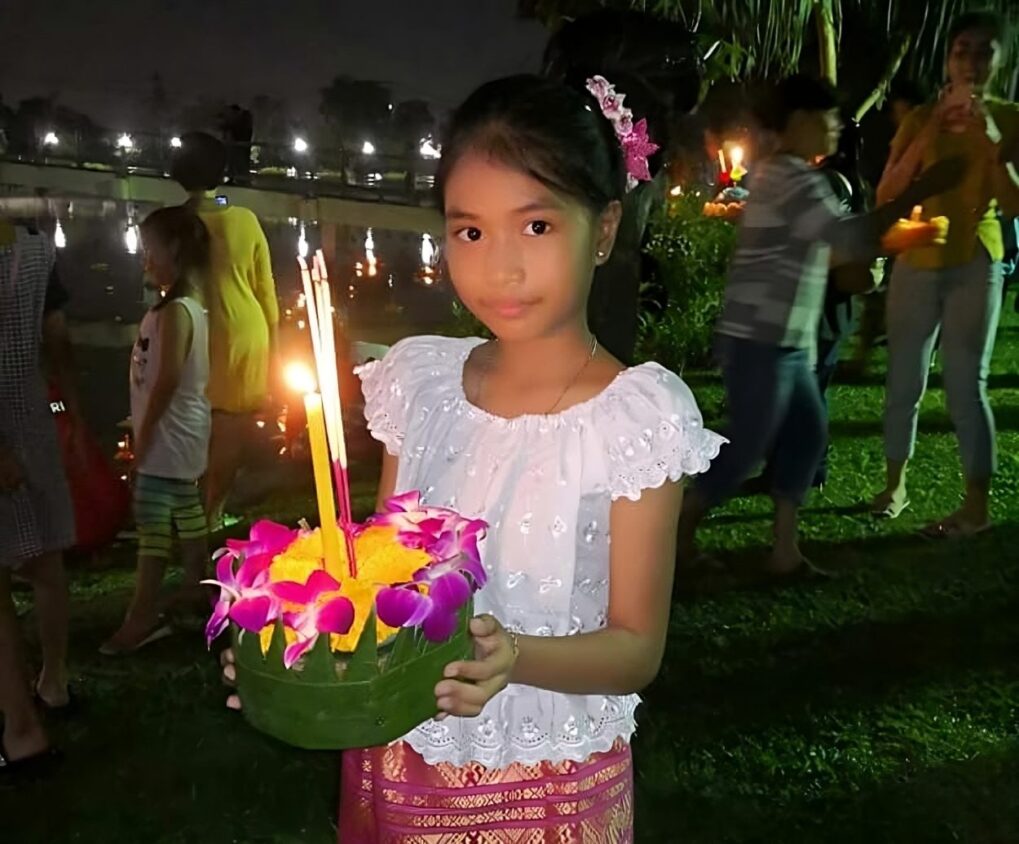
Merit Tradition # 11. Eleventh Month (October)
Boon Ok Phansaa (บุญออกพรรษา)
Like the Boon Khao Phansa merit making tradition, Boon Ok Phansa is observed not only in Northeast Thailand but throughout the Kingdom. However, Isaan conducts its own unique events to celebrate the end of the Buddhist Lent period, known as Wan Ok Phansa.
Boon Khao Phansa occurs on the 15th day of the waxing moon of the 11th lunar month. In addition to giving alms to monks, a procession of steamboats (เรือไฟ) occurs in a few Isaan areas. Sakon Nakhon also holds a Prasat Phueng (ปราสาทผึ้ง) parade, as part of its Wax Castle Festival and Long Boat Races which celebrate the end of Buddhist Lent.
One also can see lanterns lit during the evening at certain Thai temples and in front of houses; while in the countryside of Northeastern Thailand, newly sprouted ears of rice called “milk rice” (ข้าวน้ำนม) may be made into flowers for worship.
Merit Tradition # 12. Twelfth Lunar Month (November)
Boon Kathin (บุญกฐิน) and Loy Krathong (งานลอยกระทง)
The final event of the “Heet Sip Song” calendar is Boon Kathin, when cloth is offered to monks called “Kathin cloth” (ผ้ากฐิน). In addition, new robes are offered to monks at this time. During this same period, the famous Thai festival Loy Krathong is held. During the festival, people gather at night around rivers, lakes, and ponds to release small floating baskets, called “krathongs,” which are usually made from banana leaves and decorated with candles, incense, and flowers. This act symbolizes letting go of grudges, anger, and bad deeds, with the candle honoring the Buddha, and the float carrying away bad luck and misfortune, thereby bringing good luck and starting anew.
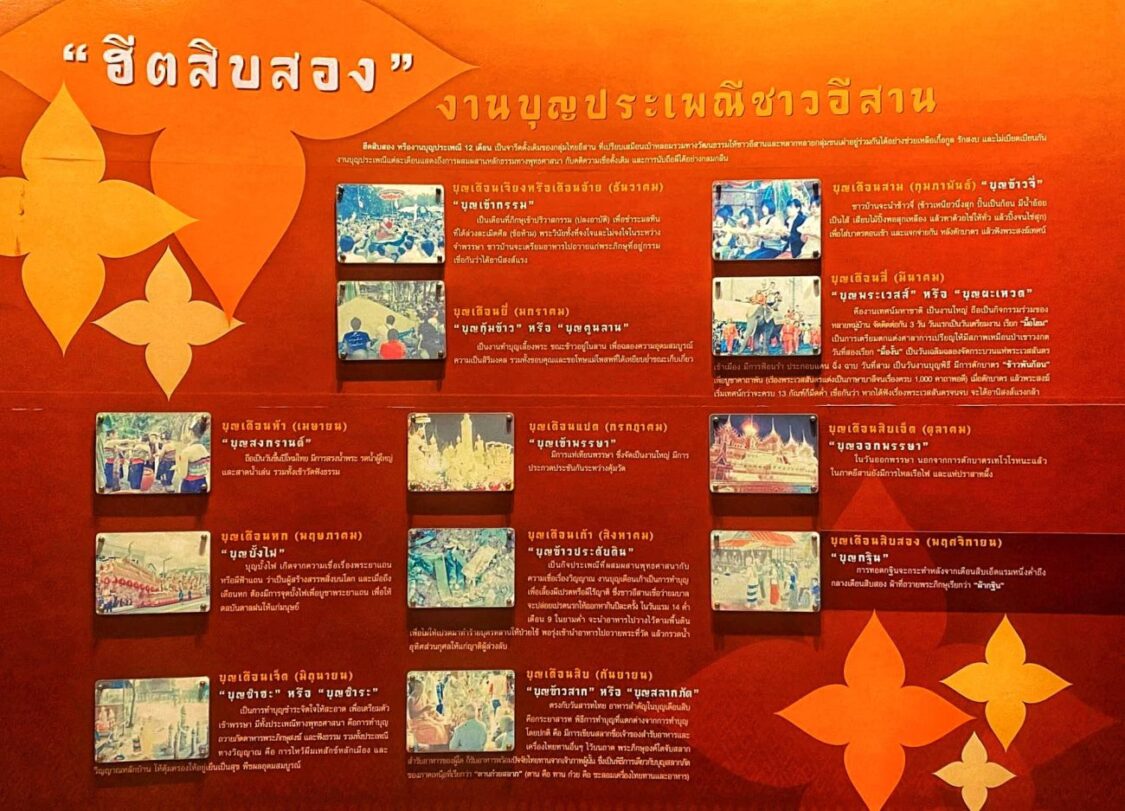
How to Find a Heet Sip Song Event
You are unlikely to find any “Heet Sip Song” events publicized in English. So, if you live in Isaan or are traveling through Northeastern Thailand on holiday, and would like to join one of these merit-making events, your best bet is to take the Thai name of the event and plug it into Google and/or Facebook, along with the Thai name of the province you live in or are visiting. Then use Google translate to translate the Thai page into English.
For example, let’s say it is the month of May and you are in Sakon Nakhon. Take the Thai name for Boon Bang Fai (บุญบั้งไฟ) and the Thai name of Sakon Nakhon (สกลนคร), and in the Google Search box look up: บุญบั้งไฟ กลนคร. You might also add the current year to your search, or the Thai version of the current year, using the Buddhist era calendar. For more info on dates, check out our post: How to Read Dates in Thailand.
- The Royal Ploughing Ceremony in Thailand – A History - May 8, 2024
- Dying Well the Buddhist Way in Thailand - May 7, 2024
- Comforting Words for the Brokenhearted in Thailand - May 6, 2024
